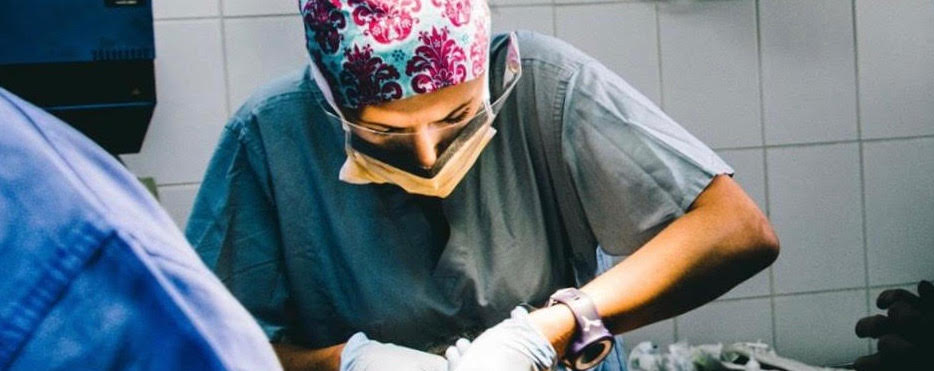Rustic care and combat duty shapes a career path
In a small Honduras hospital, outfitted sparingly with donated equipment and medication, April Ritter called into practice every fundamental lesson she had learned during nurse anesthesia training.
Back in a VCU operating room, she had access to the latest technological tools for patient monitoring and anesthesia delivery. But this wasn’t VCU – indeed, it wasn’t any modern operating suite.
Here in a poverty-stricken corridor of the Central American nation, her greatest asset was her broad knowledge, developed after hours of classroom instruction, simulation laboratories and hands-on learning with the top-flight practitioners in the Department of Nurse Anesthesia.
“We were navigating in a rustic environment, to say the least, but everyone had the same mission: Patient safety,” Ritter says. “The experience gave me insight into the evolution of nurse anesthesia and to what the past was like.”
In the Honduras operating room, practicing safe medicine meant close collaboration with everyone on the surgical team, including smart tradeoffs that were in their patients’ best interests. During one surgery, the team opted to dedicate the single power source to manage the oxygen tanks, which in modern hospitals in this country run on a dedicated line in each surgical suite. Without advanced monitoring to help regulate and monitor her patient’s breathing, Ritter personally spent five hours squeezing a ventilation bag to keep her patient’s lungs working.
The team did bring some portable specialized diagnostic and surgical tools to aid in caring for patients, and they found creative ways to perform surgeries that would change Hondurans’ lives. “On the surgical days, from the time we got up to the time to the time we went to sleep, we were caring for the people of Honduras, who had come from all over the country,” she says.
Ritter was able to adapt and care for her patient in a less-than-ideal environment because every lecture, every hands-on instruction, every surgical rotation at VCU is rooted in making the safest choice for the patient. “Safety is at the forefront of my anesthetic plan – no matter where I am practicing, be it a state of the art operating room, a remote offsite location, or an underdeveloped country,” she says. “Making Patient Safety Real is not just a slogan: It’s a way of life at VCU.”
Faculty members prepare students to be advocates for their patients – to do what is best for them in a surgical setting. As Ritter puts it, under anesthesia, patients have no voice, but “you have a voice to speak up if you see something. You take the extra time to make sure the patient is not being exposed to infection, that the proper anesthetic medications and equipment are at the ready, that every provider in that surgical suite is communicating and collaborating to put the patient first.”
On a personal level, putting patient safety first “means creating an anesthesia plan that is individualized to each patient, consistently advocating to protect your patient from harm, and maintaining your personal education and passion,” Ritter says.
Ritter is now practicing as a CRNA in Maine, where she spent much of her childhood. After completing nursing school, Ritter joined the U.S. Army, where she worked as a critical carenurse on deployments that included posts in Iraq and Afghanistan. Assigned to a medevac flight team that treated injured soldiers, she worked closely with CRNAs, who began to teach her about their practice. This is when Ritter decided she wanted to pursue a career in anesthesia.
“I wanted to have that skill level and that knowledge,” says Ritter, who graduated in December 2017 with her master’s and will earn her DNAP in May 2018. She started looking at advanced training programs, honing in on a handful of universities.
And the moment she walked into an information session led by VCU nurse anesthesia practitioners and professors, her search was over.
“What brought me to VCU was the faculty. I was very impressed by them, and their endless list of accomplishments such as textbooks, journal publications, research and training presentations,” says Ritter, who recalls being captivated during that information session, which was followed by one-on-one interviews with three faculty members.
“VCU has outstanding nurse anesthesia faculty members who are excellent practitioners, researchers and educators – which really sets this program apart,” Ritter says. “The passion that transpires from the faculty is contagious.”
- Learn more about the VCU Nurse Anesthesia DNAP entry to practice program.
